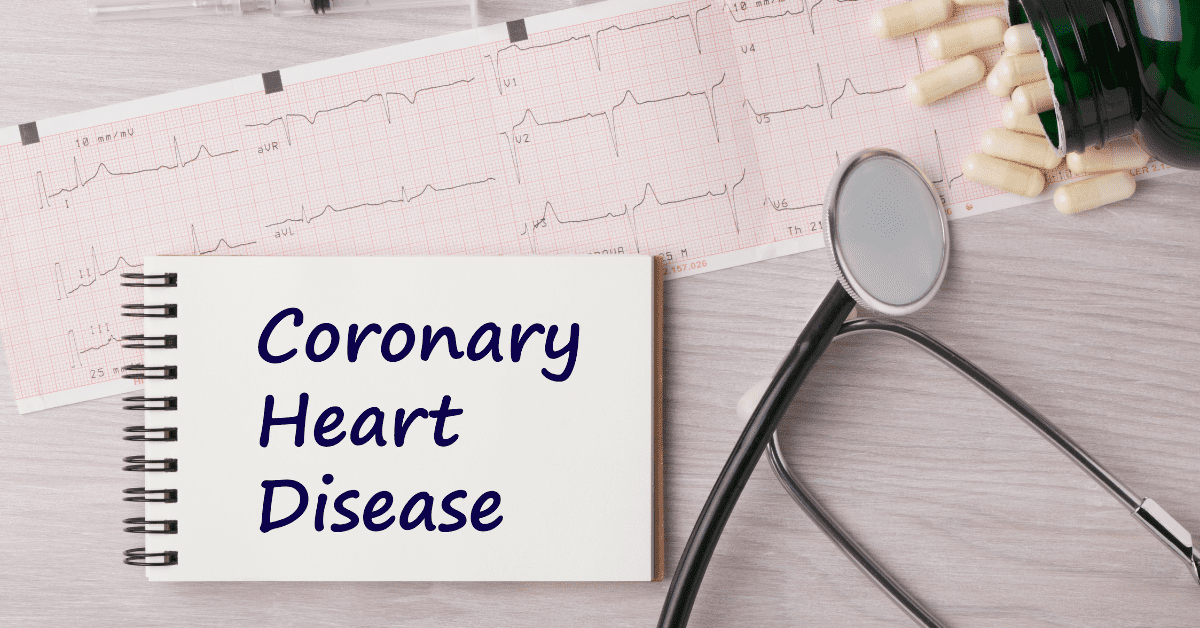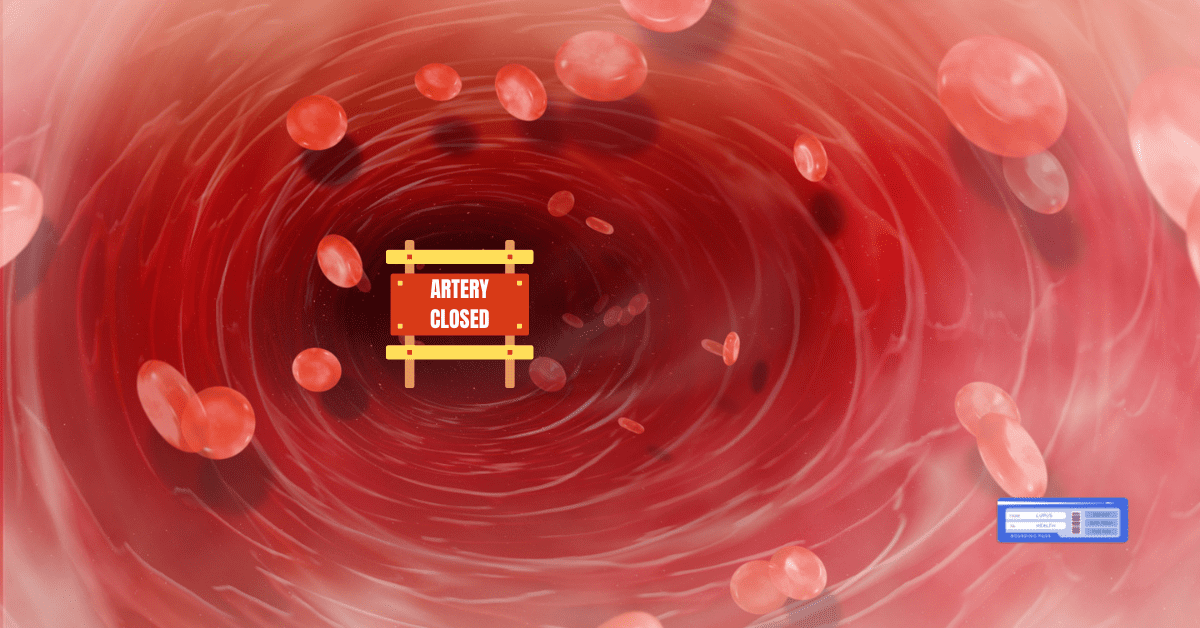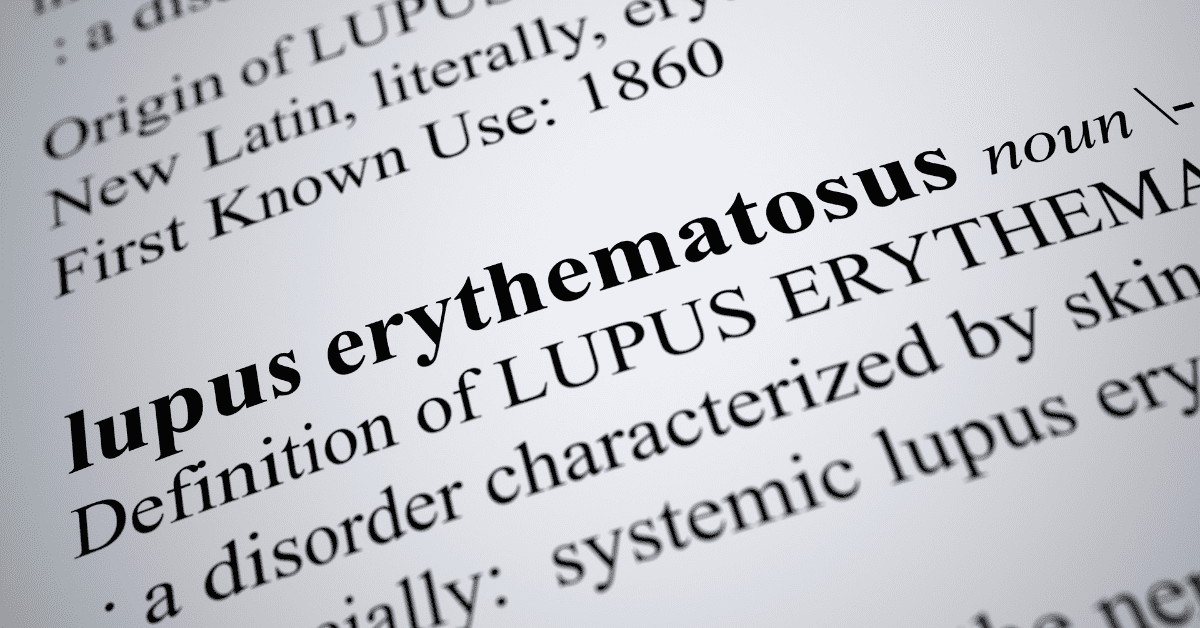How can lupus affect your heart was not one of the first questions that came to mind for me. Then I had very little knowledge on lupus and heart disease.
In fact, Can lupus kill me? – was my second question after hearing the consultant tell me that I have lupus. My first question was “What is lupus?”
It’s a memory that lives with me still today – 10 years after. As does my relief hearing her reassure me that most people live a ‘relatively normal life’…
Now I understand what she meant.
Relative Reality of Lupus
For instance, do you know what kills more people around the globe than any other reason?
“Coronary Heart disease” …
In the league of death, it’s the reigning champion.
As a single ailment, it kills more than 9 million people a year. According to the World Health Organisation.
It’s also the most common cause of death in patients with late-onset or long-standing lupus. [1]
If nature had a hatchet man, heart disease would be that.
That’s true for both those with or without Lupus.
But, what’s worrying, is that those of us with systemic lupus, have a 1-in-2 chance of developing it. [2]
In fact, having lupus puts you 9-times more likely to have a heart attack! [3]
That means we are 9 times more likely to have a heart attack than the average Joe and Joan. As well as having a 50% chance of developing deadly heart disease.
You’re a target… But you were never warned!
But fear not. There is one way in particular that you can protect yourself.
Head’s up: It may surprise you.

What is Coronary Heart Disease?
Coronary heart disease is what it says on the tin… a disease of the coronary arteries of the heart.
The coronary arteries supply blood to the heart muscle. Overtime, the disease causes a blockage of these arteries. Thus, reducing the supply of blood to the heart muscle.
This is why some refer to this issue as, “Ischaemic” Heart Disease. Ischaemia means a “reduced blood supply”.
Coronary heart disease is one of many cardiovascular diseases. Stroke – the second-leading cause of death worldwide – is another example.
The underlying issue is the same – the blockage. The difference is, where the disease occurs. For instance, a blockage in the brain equals a stroke, etc.

Signs and Symptoms of CHD
If heart disease goes unnoticed, the usual outcome is a heart attack. This is when blood flow to a part of the heart clogs up. Yet, this can then get worse in a moment – resulting in lights out! (“sudden cardiac arrest.”)
What’s scary is that most people will have no symptoms of coronary heart disease. Medics call this “silent ischaemia.” Many only realise they have heart disease when they experience:
- Serious chest pain
- Heart attack
- Sudden collapse.
This is one reason why coronary heart disease is death’s best friend. In fact, over 50% of people who die of coronary heart disease have had no symptoms beforehand. [4]
The best-case scenario is your heart rate goes out of sync before things get oh so serious. Noticeable by either a fast or slow heart-rate. Or an irregular heart-rate where it jumps from both.
Health professionals know this as “arrhythmia.” The most notable warning sign of such is “palpitations”. This is where:
- Some people might feel their heart pounding or racing in their chest at times.
- Others may notice their heart ‘skipping a beat’ now and again.
Still, this can also go unnoticed. Hidden under the cloak of anxiety and such. [5]
The one sure-fire way to keep a ‘lookout’, is to do just that. Keep a watchful eye on your heart-rate. You can do this by buying the likes of a heart-rate monitor or smart-watch.

How does Lupus cause Coronary Heart Disease?
Like every lupus issue, it begins with the immune system.
The Back-Story (The War Within)
The purpose of your immune system is to defend against invading bacteria. So, to keep things simple, let’s view your immune system as the body’s military.
Up to 70% of this immune force is specific soldiers called, “Neutrophils”. That’s why constant low levels of these soldiers raise your risk of death from severe and frequent infections. [6]
The remaining 30% account for the other four types of white blood cells.
For reasons unknown, people with lupus appear to have a military made up of lunatics. Like they’re all MK Ultra test subjects. Most being more-than-happy to self-destruct ‘for the greater good’ – kamikaze style. [7] Science calls this suicidal process, “Apoptosis”.
Neutrophils have a short-lifespan in healthy individuals as it is. [8] But even shorter in lupus.
This creates a backlog of dead solider-cells laying around. [9][10] This continuous loss of cells can leave fewer soldiers available to patrol. Translating to low levels of neutrophils. This is known as “neutropenia” – thought to occur in up to a third of people with lupus. [11]
This is in part due to the Neutrophil’s style of attack.
They prefer to attack threats by first trapping them in NETs (“neutrophil extracellular traps”). Thus, creating a shut-in target to ambush with their suicidal counterparts. The problem in lupus though, is they cast more NETs than they can clear up. Meaning that healthy tissue can get attacked and damaged due to old NETs not being destroyed. This then starts the journey towards an autoimmune condition – like lupus. [12]

How Lupus leads to Coronary Heart Disease
As we know, Systemic Lupus is a long-term condition characterised by inflammation. With no part of the body being off limits. This can cause damage to many organ systems – including the heart. [13]
Inflammation is your body’s alarm system. Nasty bacteria will set it off; then your body’s military respond.
This can happen anywhere within your body – causing both tissue and vascular damage. When these suicidal soldiers go gung-ho in the arteries and veins, they push the body to form blood clots. This is what we call “Thrombosis.” [14]
When this happens within the deep veins on your legs, it causes “Deep Vein Thrombosis”. But, when it happens in an artery near the heart, it causes “Atherosclerosis”. Which then can progress onto coronary heart disease – or a stroke. [15]
Lupus and Coronary Heart Disease
If we go back to our war-within scenario… heart disease occurs in Lupus like so:
Plaque build-up sets off alarm signals (inflammation) within the coronary arteries. So, the immune soldiers (Neutrophils) rush to the siren location via the bloodstream.
They enter the alarm site by infiltrating between the inner-cell lining of the blood vessel (“Endothelium”). Once they find the site, they cast their NETs and send for backup. Whilst using up their array of weaponry. This creates carnage… starting the suicidal-cycle as spoken about.
The outcome is chronic inflammation [16], which raises the risk of a blockage occurring. Resulting in the likes of deep vein thrombosis, heart attack, or stroke.
This is not always a result of the plaque growing too large in one spot. An equal threat comes from the plaque breaking apart and clogging up the blood vessel further on down the line.
Again, neutrophil-soldiers play a destructive role in making these plaques unstable. Once they have arrived on site in between the inner lining of a blood vessel, they start casting their NETs. They do this in sync with firing shots at their targets.
In this case, it’s “nuclear proteins”. Among them are “histones”, which are toxic to cells.
Histones kill nearby cells. In the case of atherosclerosis, it is smooth muscle cells. It does this by creating pores in cell membranes. This allows extracellular fluids to pour into the cells until they burst. Loss of these cells destabilises plaques, as they no longer are supported by underlying smooth muscle cells. [17]
Rupture of these plaques causes blood clots. Leading to heart attacks, stroke, and peripheral arterial occlusive disease.

How can we prevent heart disease?
Simple, avoid all processed foods… and eat more fats.
Here is why:
Most ‘experts’ promote High-carbohydrate diets to lower the risk of heart disease. On the idea that they lower LDL cholesterol concentrations… which most know as ‘Bad’ cholesterol.
For instance, the UK, USA, and Canada all recommend the same ‘carb-dominant’ diet:
- 30% or less energy from fat
- 15–20% energy from protein
- 50–55% energy from complex carbohydrates
Complex carbohydrates refer to foods such as peas, beans, whole grains, and vegetables. Both simple and complex carbohydrates change to glucose (blood sugar) in the body. and Glucose feeds energy to the cells of the body and in the brain. Any unused glucose store in the liver and muscles as glycogen for later use.
Yet, this advice dates back to 1977. This was the year the FDA handed out official diet advice for the first time (see image below): [18]

In essence, what they did is demonise fat. Their goal was, “to stop Americans continuing down their trajectory towards poor health.” More so, coronary heart disease.
But, did the scare factics work?
Back then in 1977, the top 10 leading causes of death in the US were: [19]
| Cause | Rate per 100,000 |
| Heart Disease | 336.0 |
| Cancer | 180.9 |
| Cerebrovascular Disease | 85.1 |
| All Other Accidents | 24.1 |
| Influenza & Pneumonia | 23.2 |
| Motor Vehicle Accidents | 23.0 |
| Diabetes | 15.4 |
| Cirrhosis of Liver | 14.4 |
| Arteriosclerosis | 13.5 |
| Suicide | 13.4 |
Today – well in 2017, the top 10 causes of death in the US were [20]:
| Cause | Rate per 100,000 |
| Heart Disease | 198.8 |
| Cancer | 183.9 |
| Accidents (unintentional injuries) | 52.2 |
| Chronic lower respiratory diseases | 49.2 |
| Cerebrovascular diseases | 44.9 |
| Alzheimer disease | 37.3 |
| Diabetes | 25.7 |
| Influenza and pneumonia | 17.1 |
| Nephritis, nephrotic syndrome and
nephrosis |
15.5 |
| Intentional self-harm (suicide etc.) | 14.5 |
On the offset, it looks good. With Heart Disease dropping from a rate of 336 to 199.
But, this neglects two important facts:
#1. Heart Disease is the still number one cause of death
The whole anti-fat food campaign started with cholesterols supposed-link to heart disease.
LDL in particular – what some call the “bad” cholesterol. Yet, we now know that changes in LDL cholesterol are not an actual measure of heart disease itself. In fact, this theory may even contribute to this global issue. [21]
The proof is the failure of many drugs to reduce cardiovascular events. Despite them reducing LDL cholesterol levels. [22][23]
Likewise, diet can reduce LDL cholesterol. But, in ways that do not reduce a person’s risk of heart disease. For instance, replacing saturated fat with carbohydrates lowers LDL cholesterol. Whilst also reducing HDL (“good”) cholesterol. As well as increasing the number of nasty triglycerides. [24] Both of which also contribute to heart disease – or so they say.
This is why 40-years later, heart disease still kills more than any other reason.
#2. Medical Interventions have improved
Some may argue that deaths are still high today due to the rise in obesity and diabetes. [25][26] Both being precursors of heart disease.
But back in 1998, physicians Daniel Levy and Thomas Thom noticed a “Puzzling Paradox:”
Deaths from heart disease had dropped from 1950 to 1998. But people were still getting CHD at around the same rate. [27] The reason, we now know, was due to medical/surgical intervention. Along with secondary rather than primary prevention. [28]
So, in reality, not too much had changed.
Coronary heart disease was still the biggest killer in the United States. And still is today. It was just deaths from CHD were lower due to improvements in medical interventions.

Sugar Controversy
In 2016, a nutritional bombshell was dropped. But, like anything that goes against the ‘agenda’. It just got swept under the carpet like Bill Clinton’s season pass for Epstein’s island.
In 2016, an honest researcher blew the lid on a past scandal. It came out that the Sugar Industry gave some hush money to scientists in the 1960s. $50,000 to be exact. Their job was to play down the link between sugar and heart disease. Whilst pushing saturated fat as the villain instead! [29]
Was this a one-off? Common sense says not. Begging the question, can we even trust science?
Not only did this scandal ruin livelihoods – RIP John Yudkin [30]… or making some in Ancel Keys case.
It also set the foundations for our diets today. It’s the reason we’re all taught to fear saturated fats and accept all carbs. All calories are the same after all, aren’t they?

Facts: Fats are your Friend
Half a century later and things are starting to change. There is more data to study. As well as a better understanding of how nutrition impacts the body in science – with coronary heart disease in particular.
The truth is that we need to eat fats. They contain ‘fat-soluble Vitamins, among many other benefits.
– CLICK HERE to learn why we need to eat Fats –
What many forgot to highlight – in past research in particular – is that dietary sources of saturated fat are not set apart. Foods that contain saturated fats will contain a mix of other fats and food ingredients. Unlike sugar – the other suspect!
One recent shift in science is that saturated fats may improve your fat profiles (i.e. cholesterol levels). Thus, reducing your risk of heart disease. For instance, some saturated fats in fact increase ‘good’ HDL cholesterol. Not the ‘bad cholesterol’ as advertised.
Meaning, that while eating a lot of processed meats may increase your risk of CHD. Eating saturated fat itself may not only pose no risk but actually lower your chance of developing heart disease.
Carbs and Calories created equal?
One common diet misconception is that all calories are equal… 1 kcal is 1 kcal etc.
On this basis, our diet-goal is to reach a daily calorie target. E.g., 2000 to 2500 kcal a day.
But if we remove saturated fats – or any other food – we have to replace it with something else.
With fats being ‘the devil’; carbs become the natural choice. This creates a blind spot in which people see all carbs as ‘good food’. Which encourages us to opt for high-carb and low-fat foods.
The end result is a high-carb, low-fat diet.
I know because this was my mentality once! Especially when I was deep into my weight training.
Yet, if you choose carbohydrates, particularly “refined carbohydrates” like sugar, you actually increase your risk of heart disease. [31] As John Yudkin was saying back in the 1960’s.
– Click here for John Yudkin’s ‘Pure, White and Deadly’ book –
This is because carbohydrates lower your HDL levels – ‘good cholesterol’. Whilst raising many heart disease health markers:
- Total cholesterol
- Triglycerides
- LDL (bad cholesterol)
- Oxidised LDL
- Uric acid
- Insulin resistance
- Abnormal glucose tolerance
- Altered platelet function
Even if you have no clue what the above markers mean. It’s easy to see that it’s worse than an increase in both bad and good cholesterol – The outcome if you eat a high amount of saturated fat.
Potent Processed Carbs cause:
Processed foods and drinks contain a potent sugar – “Fructose”.
Not in its natural form, but in its refined form of table sugar (“Sucrose”) or “High Fructose Corn Syrup”.
Obesity
Consuming these sugars can lead to resistance in “leptin.” This is a key hormone in the maintenance of normal body weight. The overconsumption of added fructose increases your risk for obesity. A condition with a close link to coronary heart disease.
Diabetes
A diet high in sugar also pushes you towards pre-diabetes and diabetes. Even the earliest of stages of pre-diabetes can cause damage to the heart. [32] So, there’s no wonder that patients with both of these conditions have a higher risk for both death and coronary heart disease. [33][34]
Fatty Liver
Ingesting too much of this fructose increases your chance of developing “non-alcoholic fatty liver disease”. This is where the liver becomes fatty, but not due to alcohol.
One problem this condition brings is it increases your chance of developing coronary heart disease. [35] In fact, the link between fatty liver and heart disease, is stronger than heart disease has with:
- Smoking
- High Blood Pressure
- Diabetes
- Being male
- High Cholesterol
- Metabolic Syndrome

Artery Advice: The Final Message
Natural sugars in fruits and vegetables pose no risk for us and coronary heart disease. The problem lies with refined sugars. With ultra-processed foods being of greatest concern. [31]
75% of all packaged foods and beverages in the US have added sugar in them. Most of which contain sucrose or HFCS. Two sugars that raise your risk of coronary heart disease even more than any other sugars.
Ultra-processed foods also tend to contain saturated fats. Yet the ill-effects of eating these products may have nothing to do with the fat. But has everything to do with processed foods themselves.
So, the best advice is to avoid processed foods rather than avoiding saturated fat. Avoiding these fats could pull you away from healthy foods. Steering you towards foods that may be harmful. I.e., low-fat, ultra-processed, with huge amounts of hidden added sugars.
Meaning…
To keep coronary heart disease at bay, we need to eat whole foods whenever possible. Whilst avoiding ultra-processed food like the plague!
Sounds a lot easier than it is!
Takeaway Points:
- CHD was and still is the number one cause of death worldwide.
- CHD deaths have lowered, but how much of this is to do with improvements in medical interventions?
- Fat’s link to heart disease stinks of foul play from the sugar industry.
- Refined sugars damage the heart.
- Thus, avoid processed foods and be free to eat ‘natural’ fatty foods.
Unfortunately, this isn’t where your heart health concerns end.
Suggested reading:
- 5 Rotten Reasons Why are Soft Drinks are Bad for You
- You will be deficient in this Vitamin if you have lupus: Here are 5 reasons why
- Could lupus be a blood disorder?
- 7 Daily Habits for a Healthy Heart
Pingback: Could Lupus be a Blood Disorder? -
Pingback: 7 Daily Habits for a Healthy Heart with Lupus -